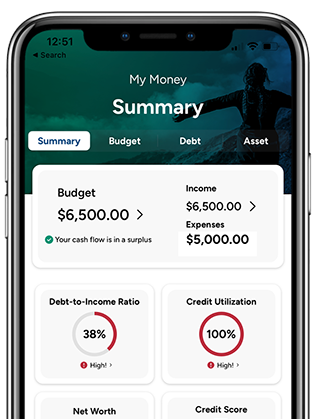The following is a guest post from Darcy Evans, an administrative assistant at American Consumer Credit Counseling.
So you have graduated college. This is a major accomplishment. If you are like me, you spent four years mostly in the library squinting and cursing the poor iridescent lights as you tried to read an Everest size mountain of books. Or perhaps you are still trying to catch up on all the sleep you missed pulling all-nighters writing papers and studying for that impossible biochem test. Or maybe college was a cake walk – everyone is different. Maybe you didn’t graduate, but got a job instead, or maybe you graduated years ago and college is now a distant memory. Regardless, you probably have student loans. They might not even be from college, but from graduate school or a technical school. Still, it’s a debt that needs be paid.
Not all borrowers are fully aware of their student loan repayment options. Sadly, many people defer their loans or go into forbearance pilling up interest and making payments even more difficult when they could be better served simply changing their repayment plan.
Many people don’t know that you can change your student loan repayment plan at any time. This is not surprising. Trying to navigate through federal bureaucracy in search of information is like slogging through a particularly muddy bog with tennis shoes, in the middle of the night, without a flashlight. For example, I had a couple of very specific questions about the various income-based repayment options. I asked my school’s financial adviser (thank you graduate school), he had no idea. He could probably talk for hours about my various loan options, but he couldn’t tell me a thing about repaying them. He gave me the email and phone number for the Direct Loan customer service. I called and was put on hold for an hour. I hung up. I emailed. They sent me to their website.
Apparently you have to be rather tenacious or an expert at reading financial jargon to really know your repayment options. To be fair, the Federal Student Aid Website (studentaid.gov) is pretty good. There are plenty of links, repayment calculators, and explanations, but if you have a question beyond that, good luck!
Here is my quick summary of the plans (please understand I never did get my questions answered so this is strictly based on what is on their website):
- Standard Repayment Plan: this can be used for Direct Subsidized and Unsubsidized loans, Subsidized and Unsubsidized Federal Stafford Loans, and all PLUS loans. Payments are fixed at least $50 a month for up to 10 years.
- Graduated Repayment Plan: also can be used for Direct Subsidized and Unsubsidized loans, Subsidized and Unsubsidized Federal Stafford Loans, and all PLUS loans. Payments are lower to start and increase every two years as your earning potential hopefully increases for up to 10 years.
- Extended Repayment Plan: also can be used for Direct Subsidized and Unsubsidized loans, Subsidized and Unsubsidized Federal Stafford Loans, and all PLUS loans. Payments may be fixed or graduated depending on the type of loan you have and the specific payment plan you agree on with your lenders. The monthly payment on this repayment plan is lower because it is stretched for up to 25 years, which means the interest is higher, however, it may be more practical.
- Income Based Repayment Plans (IBR): This payment plan can be used for Direct Subsidized and Unsubsidized loans, Subsidized and Unsubsidized Stafford Loans, Direct PLUS loans, and Consolidation loans (Direct of FFEL). Payments are based on 15% of your discretionary income and will change as your income changes for up to 25 years. You must have a partial financial hardship to qualify for this repayment option.
- Pay as You Earn Repayment Plan: Can be used for Direct Subsidized and Unsubsidized loans, Direct PLUS loans, and Direct Consolidation loans. Monthly payments will be based on 10% of your discretionary income and will change as your income changes for up to 20 years. You must be a new borrower (October 1, 2007) and must have received a disbursement of a Direct loan after October 1, 2011 to be applicable.
- Income-Contingent Repayment Plan: can be used for Direct Subsidized and Unsubsidized loans, Direct PLUS loans, and Direct Consolidation loans. Payments are based on your income, family size, and total amount of your loans for up to 25 years.
- Income-Sensitive Repayment Plan: applicable for Subsidized and Unsubsidized Federal Stafford loans, FFEL PLUS , and FFEL Consolidation loans. Monthly payment is based on your annual income for up to 10 years. Lender’s formulas for determining your monthly payment vary.
Let’s look at some numbers. As I mentioned in my last post, the average student loan debt for a college graduate in 2011 was $26,000. Let’s use that as a base (120 months is 10 years).
| Plan | Months | Monthly payment | Total costs | Interest payment |
| Standard | 120 | $299.21 | $35,905.06 | $9,905.06 |
| Graduated | 120 | Starts at $205.45 and increases every two years to $448.81 | $37,844.45 | $11,844.45 |
Extended repayment options are only available for loans over $30,000. These numbers are based on loans of $31,000 (300 months is 25 years).
| Plan | Months | Monthly payment | Total costs | Interest payment |
| Extended Fixed | 300 | $215.16 | $64,548.71 | $33,548.71 |
| Extended Graduated | 300 | Starts at $178.37 a month and increases every two years to $299.92 | $69,515.80 | $38,515.80 |
The income-based repayment are obviously a little more difficult to figure out and there isn’t an easy calculator. For those repayment options you really do need plow through the bureaucracy.
If you’re struggling to pay off debt, ACCC can help. Schedule a free credit counseling session with us today.







